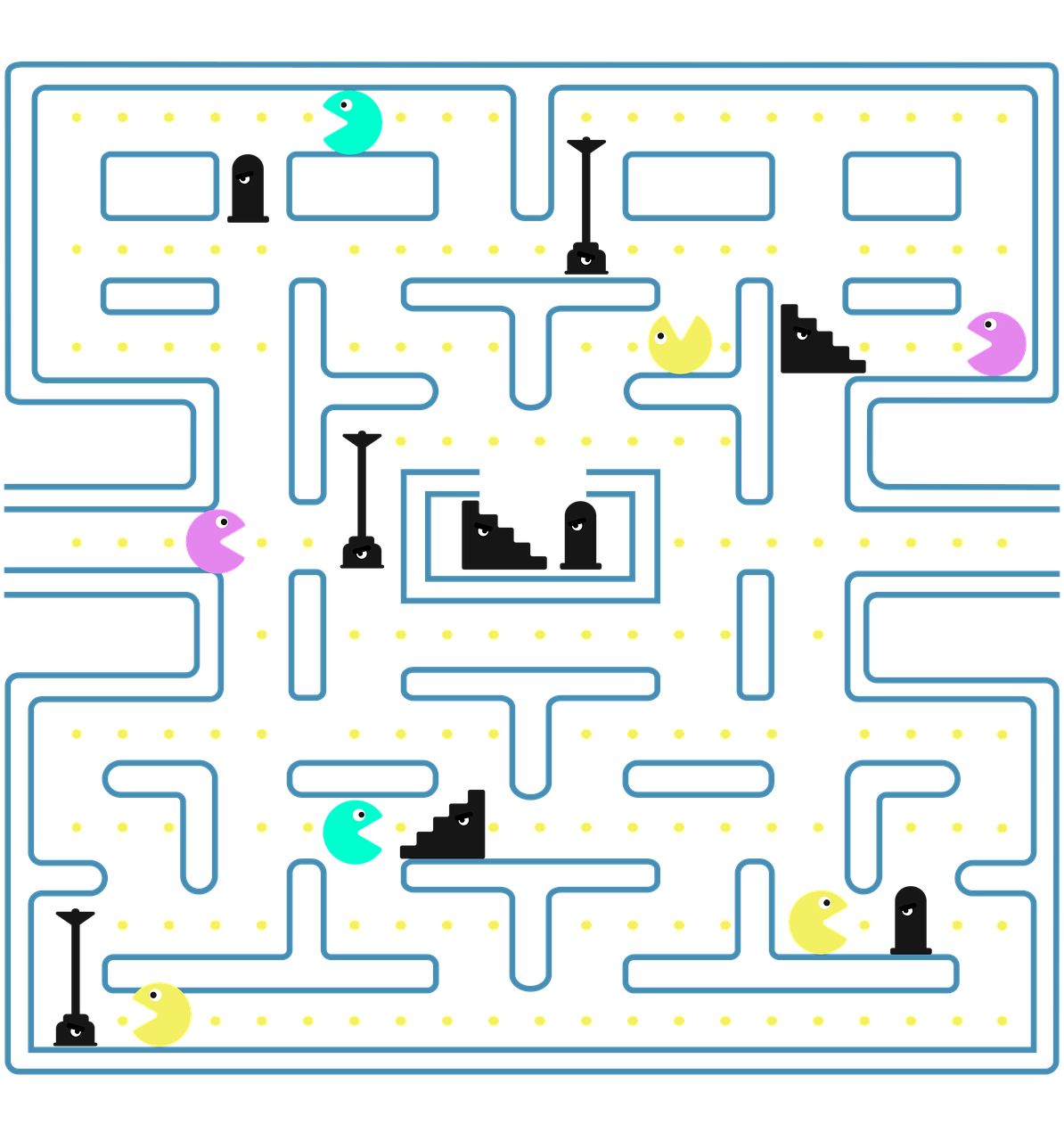Save the Night: When Boring Happens, Break Out the Weird
Worse parties aren’t a glitch—they’re statistically common: most gatherings hit a lull within thirty minutes. Been there? Empty chatter, everyone scrolling. Panic.
A single tiny, ridiculous game can flip the whole room. No props, no anxiety, just a weird prompt that pulls people in and makes them laugh. This guide gives practical, low-prep games that work for mixed groups and lean into absurdity.
You’ll find icebreakers, competitive dares, collaborative prompts, brave performance bits, and mellow finales. Ready to rescue your night? Let’s play and make ridiculous memories tonight, right now.




5 Insane Party Games That Will Make Your Next Gathering Unforgettable
Low-Prep Icebreakers That Turn Strangers into Co-conspirators
Ridiculous-Name Round
Quick setup: everyone says their real name plus a silly epithet (e.g., “I’m Sam, Sandwich Whisperer”). Go around clockwise.
Suggested scripts:
Timing: 2–5 minutes for 6–12 people; 6–8 minutes for larger groups.
Scale-up: In groups over 12, have people pair up and introduce each other as their new ridiculous alter ego.
Two Truths, One Lie — The Silly Twist
Quick setup: each person shares two mundane truths and one outrageously fake claim (e.g., “I once beat a goat in chess”).
Suggested scripts:
Timing: 3–8 minutes depending on group size (limit to 3–4 turns per round to keep momentum).
Scale-up: Break into triads so each round finishes in 4–6 minutes; rotate triads every round.
Mimic Chain (Movement Telephone)
Quick setup: person A performs a quick gesture or sound (3–5 seconds), person B copies, and so on; last person both copies and invents the final flourish.
Suggested scripts:
Timing: 2–6 minutes per round. Best as 2–4 rounds.
Scale-up: Split into two chains to create playful competition; have chains swap leaders halfway.
One-Word Story (Optional Cozy Warm-Up)
Quick setup: sit in a circle; each person says one word to build a communal story (silliness encouraged).
Suggested scripts:
Timing: 2–5 minutes; aim for 20–40 words per story.
Scale-up: For big groups, form two circles and fuse them for the final round.
Tips for shy guests:
Transitioning energy: end a warm-up with a playful collective action (group clap, chant, or a quick photo). That shared momentum makes moving into longer, louder challenges feel natural — next up: absurd, competitive games that lean into that goofy momentum.
Absurd-but-Brilliant Party Challenges (Competitive, Cozy, or Chaotic)
These five micro-challenges mix low-stakes competition with peak ridiculousness. Quick to set up, easy to adapt, and designed to reward creativity more than raw skill.
1) Spoon-Balance Relay
How-to: Balance a ping-pong ball (or grape) on a spoon and race across the room without dropping it. If it falls, perform a 5-second dance or tag back to start.Props:
2) Whisper-Sculpting (Telephone + Clay)
How-to: Player A whispers a phrase (e.g., “an anxious octopus playing chess”) to player B who sculpts it from clay; final group guesses the original phrase.Props:
3) Mysterious Item Auction
How-to: Players bring wrapped random items. Auctioneer (rotating) sells to highest bidders using fake money; buyers must invent a use on the spot.Props:
4) Blindfolded Gift-Wrap Challenge
How-to: Blindfolded player wraps an object; partner judges for speed and aesthetic chaos.Props:
5) Pitch-a-Gadget Face-Off
How-to: Give teams weird objects and 60 seconds to pitch them as luxury items.Props: Anything mundane (toothbrush, spatula).Scoring: Crowd vote for funniest, most convincing, and most absurdly luxurious.Flavor ideas: Dress as infomercial hosts, play elevator-music during pitches.
Keep score loosely, reward creativity, and don’t let perfection steal the fun — the goal is maximum laughter with minimum prep.
Creative Collaborative Games That Build Epic Inside-Jokes
Sentence-By-Sentence Story Chain
How-to: Sit in a circle. One person writes a prompt (e.g., “The pizza that conquered Tuesday”), then each player adds one sentence aloud and passes the prompt. No editing — only the next sentence allowed. Timing: 20–30 seconds per turn, 8–12 turns total.Facilitation tips:
Group-Drawing Relay (Exquisite Corpse, Modern Edition)
How-to: Tape long butcher paper to a table or wall. Each player draws for 30 seconds, then folds to hide their section and passes. When unfolded, the silliness is revealed.Props: 18″ x 24″ paper pads, Sharpie Ultra Fine vs. chisel-tip (for bold vs. delicate lines).Facilitation tips:
Soundtrack-Guessing Remix
How-to: Split into teams. Each team gets 60 seconds to layer three sound sources (clapping, a hummed melody, a kitchen utensil beat) using phones or a simple app like GarageBand. Other teams guess the theme or song remixed.Timing: 5–7 minutes per round (prep + 60s performance + guessing).Facilitation tips:
Next up: if you’re warmed up and slightly reckless, try some performance games that let people strut, mime, and fully commit.
Silly Performance Games for the Bold (and the Willing-to-Play-Along)
Mini Charades — but weirder
How-to: Use 30–60 second rounds. Instead of “movie” or “animal,” hand out bizarre category cards like “unemployed superhero,” “haunted kitchen gadget,” or “romantic drama starring a cactus.” Players mime while their team guesses. Quick tweak: allow one whispered hint from a teammate after 30 seconds.
Real-world payoff: At one party, the category “retired spy who loves knitting” produced a silent scarf-waving interpretive dance that had everyone in stitches—proof that odd prompts spark fearless commitment.
Improvised Commercial Skits with Random Objects
How-to: Dump a bowl of random objects (toothbrush, rubber chicken, novelty mug). Teams draw three items and have 3 minutes to craft a 60–90 second commercial. Rules: product must “solve” a ridiculous problem (e.g., toothbrushing for time travelers).
Facilitation tips:
Quick product note: For background music, lightweight Bluetooth speakers like the JBL Flip 5 or Anker Soundcore 2 give clear volume without hogging a table.
Whisper-Interpretation: the Escalation Game
How-to: One player whispers a mundane sentence to the next (e.g., “I lost my keys”). Each person interprets it physically and whispers their interpretation to the next. By the sixth person, the whispered idea becomes glorious nonsense and a full-body mime.
Why it works: Ambiguity + interpretation = escalating absurdity. Set a 30–60s perform window at the end to reveal the final pantomime.
Cueing, Safety Rails, and Judging
Start/stop cues:
Stagecraft: quick costume bits and pacing
Keep a box of scarves, sunglasses, sticky mustaches, and cheap boas for instant characters. Pace: 60–90s performances, 3–5 acts before a break; shorter turns maintain momentum. Rotate spotlights—literal lamps or a phone flashlight—to share the glow without pressuring any single person.
Finish-Strong Finale Games and Clean, Chill Wind-Downs
Silly Awards Ceremony: closure with a grin
Run a 10–15 minute roast-lite awards moment. Hand out slips or use your phone for instant voting. Keep categories absurd and warm: “Most Dramatic Snack Retrieval,” “Best Dramatic Exit,” or “Future Vine Star.” Announce winners with a quick one-liner and a tiny prize (candy, sticker, or a duct-taped crown).
How-to quick steps:
Real-world note: At a friend’s rooftop party, the “Most Likely to Adopt a Stray Cat” award ended in a group selfie that became the event’s defining meme for months—simple, silly, sticky.
Rewind-and-Remix: reenact favorite moments
Pick 2–4 highlights (a brilliant joke, a faceplant, a stealthy snack grab). Assign 30–90 seconds per reenactment. Options:
Variation tips:
Mellow communal playlist to close
Create a collaborative Spotify/Apple Music playlist and project it on a phone or Bluetooth speaker (JBL Flip 5, UE Wonderboom, or Anker Soundcore). Invite guests to add two closing tracks each—one upbeat, one mellow. Then run a gentle “closing set”: 20–40 minutes of tuned-down tunes, soft lighting, and comfy seating.
How-to:
Timing, wrap-up etiquette, and next-step invites
Choose one finisher that matches the room’s energy and use it to stall awkward silences—then pass the mic (or crown) to the next host. Onward to the final flourish.
Go Forth and Make Mischief (Responsibly)
Weirdness wins when it’s low-stakes: imperfect rules, goofy failures, and shared ridiculousness beat polished perfection every time. These games are tools to spark laughter, break the quiet, and stitch strangers into a crew — not to provoke embarrassment or hurt feelings. Keep it silly, keep it small, and let the night surprise you.
Tailor the moves to your crew, read the room, and nix anything that might make someone uncomfortable. Try one new game, remix it, and watch inside-jokes bloom. Share your favorite mishaps — and have a blast, responsibly. Snap pics only with enthusiastic consent.







Anyone tested the 53-Piece Carnival Lawn Games Set vs the 58-Piece Carnival Combo? I wanna invest in something that travels well and isn’t a pain to set up.
My priorities: portability, durability, and stuff kids AND adults can use. Also, how loud are the pieces? Don’t want neighbors mad at midnight.
If you have kids at the party, go for the 53-piece carnival set. Simpler games = less supervision required.
For late-night chill, lay down a blanket and play gentle toss games. Keeps noise down and feels cozier.
I have the 58-piece — it’s heavier but comes with a decent bag. The darts are soft-tip so not too loud. Setup is like 10-15 mins tops.
Good question — the 58-piece combo usually has more variety (darts, toss, knockdown) but is slightly bulkier. The 53-piece lawn set tends to be lighter. For portability, check if the set includes a carrying bag and whether pieces are hard plastic or heavier wood.
FYI some of these combos have fragile pieces — read reviews. One of our rings broke first use.
Put A Finger Down is fun but also brutally honest. Played it and learned too much about my coworkers lol.
If you’re doing it with new people, maybe warn folks that questions can get personal. Or swap in safer prompts.
Totally — we made a ‘PG’ and an ‘R’ deck once. PG for mixed groups, R for friends. Works great.
Good point — the game can veer into TMI territory. We recommended a ‘house rules’ list in the Low-Prep Icebreakers section so hosts can swap out risky prompts.
Huge fan of the cooperative games mention — Forbidden Island is such a vibe for people who hate super-competitive nights.
I run game nights with a mix of board-game nerds and casuals, and Forbidden Island gets everyone invested without the marathon rules. Also:
– It’s quick enough to play multiple rounds
– Cooperative wins = group cheers every single time
– You can house-rule the difficulty if the group is tiny
The article’s section on “Creative Collaborative Games” gave me new ideas to riff on — thanks!
Yes — Forbidden Island is perfect for that balance. Glad the collaborative game ideas were useful. House-ruling difficulty is a pro tip I wish I had earlier!
Also, bring extra snacks for cooperative games. People get very into them and forget to eat 😂
We swapped roles mid-game once and it made things hilariously chaotic. Highly recommend rotating ‘captain’ duties.
Question: does Forbidden Island take too long for a casual get-together? I’m worried it might kill momentum.
If you’re hosting families, the 53-piece carnival set is a godsend. We took it to a block party and it kept kids entertained for hours while adults got to chat.
Also — include a quiet wind-down option for nap-time toddlers. The article’s ‘Finish-Strong Finale Games and Clean, Chill Wind-Downs’ section had great kid-friendly ideas.
Thanks for sharing, Marcus. We tried to include multi-age suggestions for each game and it’s great to hear they work in practice.
Any specific quiet games you’d recommend for toddlers? My nephew needs something chill after running around.
Long post incoming—tried to apply several ideas for different groups and here’s what worked for me:
1) College friends: ‘Put A Finger Down’ with custom inside-joke prompts = chaos, 2 rounds max.
2) Neighbors BBQ: Carnival combo games, mild competition, prizes = instant buzz.
3) Mixed-age family: Forbidden Island + charades = cooperative + silly.
Also, tiny thing: include a quick checklist for ‘what to bring’ for each game type (score sheets, pens, extra batteries, snacks). Made setup smoother for me.
For the college group: add ‘one-round penalties’ (like sing a line) to keep it light and fast.
Love this breakdown, Zoe — super actionable. A ‘what to bring’ checklist is a brilliant suggestion; we’ll consider adding a printable in a future update.
Agreed on the checklist — I once forgot pens and it killed a round of charades for us.
Sidenote: label the pieces when you pack them back — saved my life when I host multiple sets.
Also, portable speaker + mellow playlist for wind-downs. Sets the vibe instantly.
Chuckle & Roar Classic Family Charades was my childhood jam, and the ‘Silly Performance Games’ section had me cackling. 😆
My partner refused at first but after one round he was doing pantomime opera. 10/10 would embarrass him again.
Opera pantomime sounds elite. Need to try that at my next dinner party.
Ha! That’s exactly the kind of ‘willing-to-play-along’ energy we wanted to encourage. Glad it worked on your partner 😊
Great list overall. My small nitpick: some of the product links (like the 58-piece combo) don’t mention storage/organizing tips. That set is awesome but the tiny parts love to escape into the couch abyss. Maybe add a tiny “taming small parts” subsection? 😅
Lol the couch abyss is a dimension of its own. Invest in a small box labeled ‘party parts’.
Good call — we’ll add a short section on storage tips and quick fixes (zip bags, labeled containers, sticky velcro for rack pieces). Couch abyss is real.
Baggies + a plastic toolbox solved this for me. Also snap photos of how you pack it so reassembly is easy.
Okay real talk: I will die on the hill that performance games = best way to make strangers into friends.
Tried the ‘one-minute soap opera’ prompt last week and now my group has a recurring inside joke about an ‘invisible melodramatic avocado’.
The article nailed the idea that goofy commitment beats ‘perfect’ dancing or singing skills every time.
I love the idea of small props for these games — a ridiculous hat or scarf can jumpstart the performance.
Not gonna lie, I’m shy and these games actually helped me loosen up. 0 regrets.
We did a ‘soap opera’ improv and someone cried fake tears so convincingly the cat started meowing in concern.
Yes to the invisible melodramatic avocado 🥑 — inside jokes are the best party souvenirs. Glad the prompts are usable in the wild!
Loved the Icebreaker Tumbling Tower idea — had something similar at a work party last year and it broke the ice fast.
Quick tip: write prompts that are a little weird (not just “favorite food”) and people actually open up. Tried the ‘weirdest talent’ block and it was a riot 😂
Would definitely buy the 54-block set for this.
Thanks Maya — totally agree about the prompts. We actually suggested a set of silly prompts in the article for that exact reason. “Weirdest talent” is one of my favorites too!
Omg I love the ‘weirdest talent’ one. At my last party someone did a dramatic spoon-balancing act and I lost it. 😂
Does the Tumbling Tower come with blank blocks you can customize, or do you just write on the included ones?
Low-prep icebreakers are lifesavers but watch out for cultural stuff — some prompts that are ‘funny’ to one person might be awkward to another. Maybe add a short note in the article about cultural sensitivity and opt-in rules for personal questions.
Otherwise, great list.
Solid feedback, Jacob. We do have a ‘consent and boundaries’ blurb in the Go Forth and Make Mischief section, but we can expand it with clearer examples. Thanks for pointing that out.
Maybe add a quick ‘opt-out’ card folks can hold up if they don’t want to answer — makes skipping less awkward.
Yes! I once had a prompt that assumed people drank alcohol and it got weird. Always good to have alternatives.